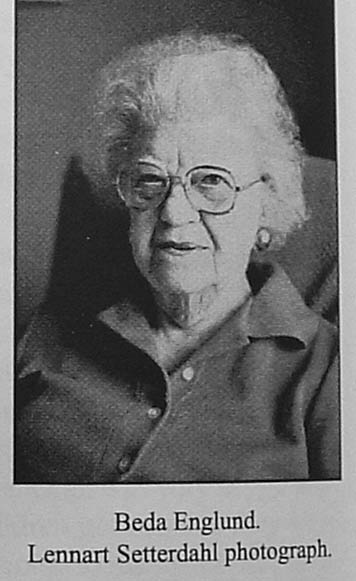
Beda Englund as interviewed
by The Swedish Cultural Committee
The Swedish Cultural Committee has published a book of reminiscences by Swedish descents in Omaha. Beda Englund remembers vivid pictures of this northside community which have brought it to life for us. Here she describes her father's arrival in Omaha:
"He arrived on a Saturday, the sixteenth of March 1888, at the Burlington Station. There was a rooming house nearby where he got a room and then went out to explore and get his bearings, north south, east, and west. 'So after he walked a few blocks and came back, he asked where the Swedish Lutheran Church was because he knew there was a Swedish Lutheran Church, which was Immanuel Lutheran. And they told him it was up that way, as we say now, and it would be northwest. So, Sunday morning, he put on his best clothes and walked north on 10th Street, and looked for a steeple. But in that situation he wouldn't have seen that steeple, and he thought maybe he'd walked far enough. Then he walked west on Leavenworth Street until he got to 19th. Just before he got to 19th, he saw a family coming across Leavenworth, and he saw that the lady had a psalm book in her arm, a hymnal. Now he knew he was on the way to church. So he followed them and finally got to Immanuel Lutheran Church.'"
These first-hand remembrances, oft-told in a family intimately associated with Immanuel for generations, need not be amplified.
Beda also clearly defines her neighborhood for us:
"We had a lot of Swedish people; from 19th & Cass, you went up 19th Street and 20th Street and that was what they called 'Stockholm.' They called it that because about every other house had a Swedish family in it. From Cuming to Lake, 19th to 20th was a Swedish community. Beda then described a area north of Lake Street to Spencer Street and from 24th to 20th as another area with many Swedes, some of the 'better class.' Other Swedes of this class, whom she described as those with more expensive homes or who were professional people, lived around 36th and Cass."
She gives a valuable picture of where the Swedes lived, but also how they lived:
"But outhouses, they still had them where I was born in 1901 at 25th and Decatur...we had a kitchen stove, a coal stove, and we had to heat the water on the coal stove. And we didn't have electric lights...the streetlights were gas operated, and a man with a long stick lit them every night. As for cleaning the streets, the city took care of that. They had certain crewmen that came once a week with their long pushbrooms. You see, they had horses all the time, so you had a dirty street. And then they would come with a big tank of water...and then they would wash down the street. It was just mud."
Here is Beda's "little Stockholm" outlined in blue on the 1885 map and some views old and new:
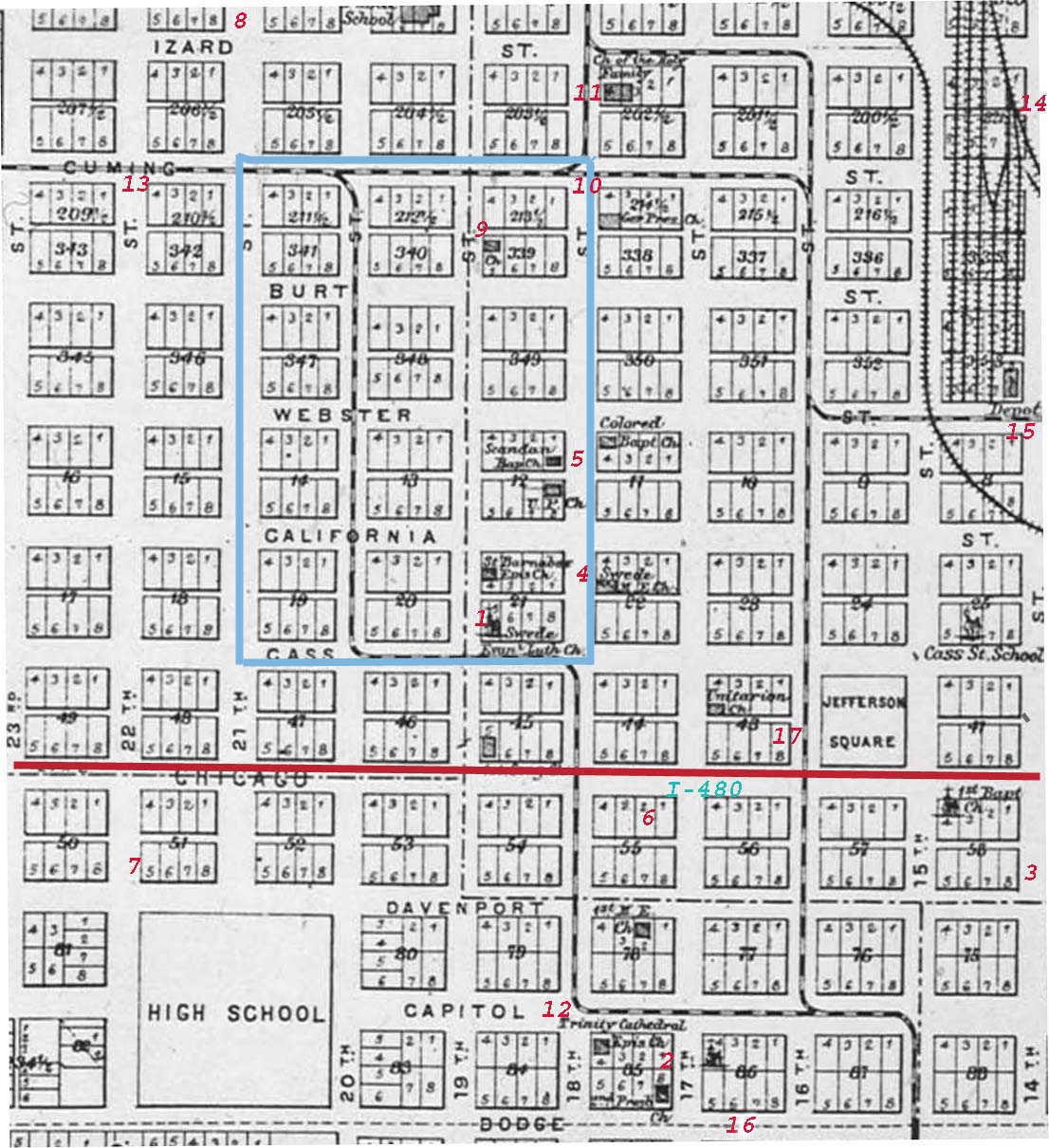
Click to see the individual locations above, then hit return arrow
1) Immanuel Lutheran
2) First Mission location
3) First Scandanavian Baptist N/A
4) Swedish Baptist
5) First Swedish Methodist, the Epworth League
6) Swedish Auditorium
7) Mission Covenant-second location
8) Swedish Methodist-second location today N/A
9) Swedish Methodist-third location N/A
10) Scandinavian 7th Day Advent?
11) Holy Family Catholic-survivor
12) Trinity Episcopal-survivor
13) Swedish Salvation Army N/A
14) Ford Assembly Plant (note water tower)
15) Webster Street Depot-Omaha Road
16) Location of 1st National Bank tower
17) Swedish Holiness "Anybody's Mission"
Notice the corridor of Swedish churches along 18th street! At the Webster street depot were train connections on the old Omaha Road to Swedish centers at Oakland, Pender, Wakefield...and Wausa.
The Immanuel congregation merged with its daughter, Zion, under a new title: Augustana Swedish Evangelical Lutheran at 36th and Lafayette Avenue, built in 1910. They cannot be accused of fleeing the "inner city", for proximity to north Omaha's black community has provided ample challenges to Augustana.
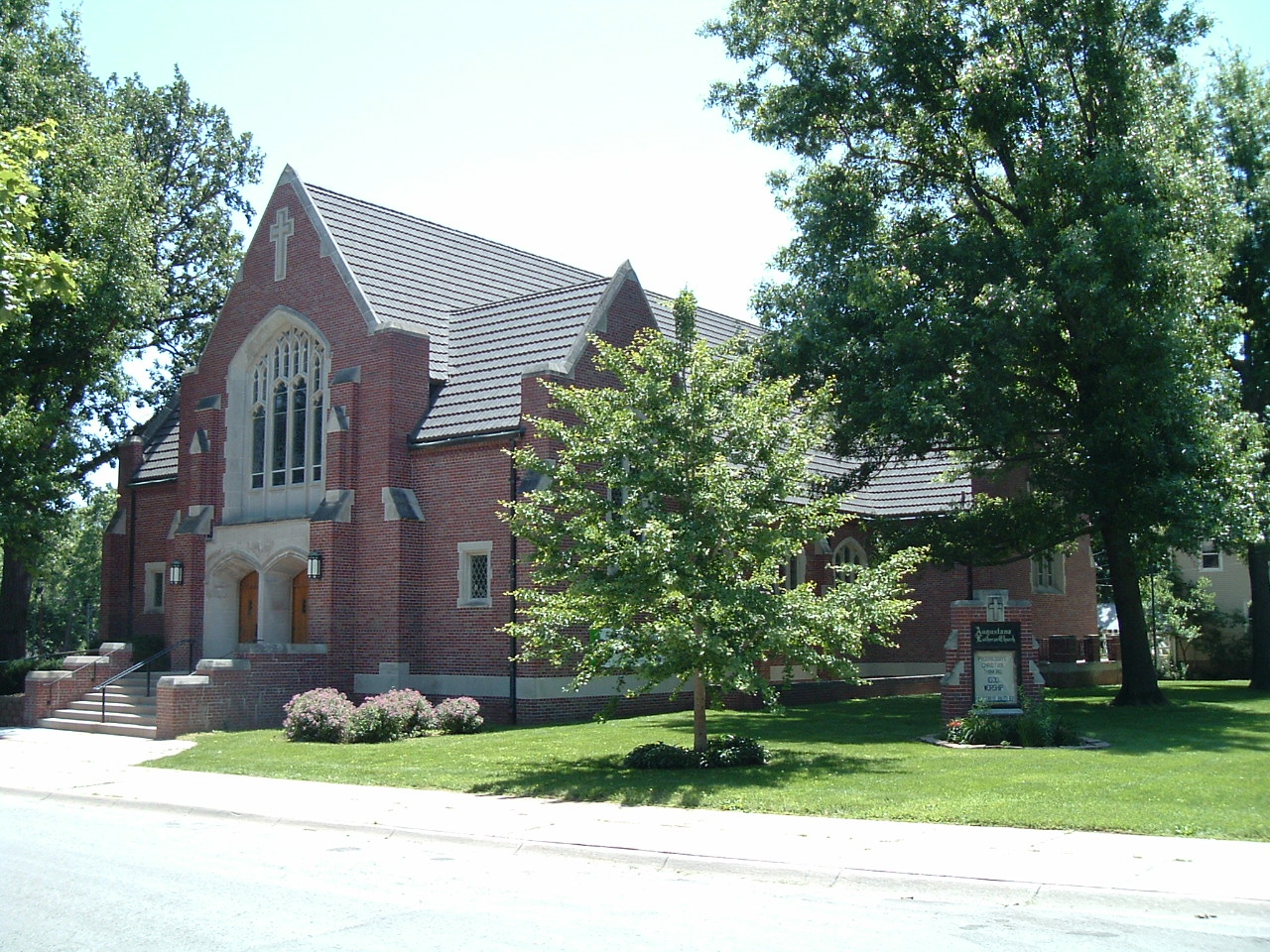
Augustana today: home of the film, "A Time for Burning"
Rev. S.G. Larson, whose story is told in the Saunders County section where he homesteaded, came as a mission pastor to Omaha in 1868. He had found many Swedes in Omaha and organized their group at a Presbyterian church on south 10th St. that year as the Scandinavian Evangelical Lutheran Church. By the time of its corporate filing in 1874, the name was changed from "Scandinavian" to "Swedish". In the meantime, a building had been constructed on Davenport between 16th and 17th St. in 1870. This was on a leased lot, and when a lot became available for purchase on Cass St. where our site picture was taken, the building was moved there in 1874. The building included a small addition which S.G. Larson had built at his own expense as a dwelling apartment, on the condition that should he remove it, he would have to replace the siding on the area left exposed! The fact that the next several pastors had to occupy this space in lieu of a proper parsonage gives insight into the financial conditions experienced by this congregation in those years.
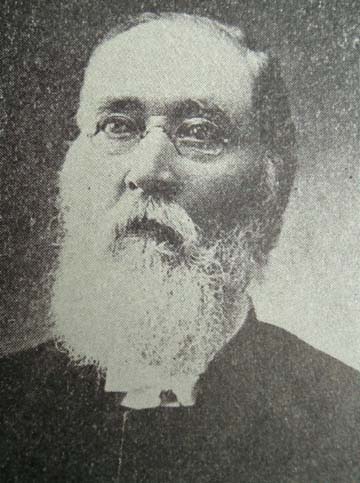
S.G. Larson, first Immanuel Pastor
The Swedish Cultural Committee's 2007 book, "Early Omaha Swedish Immigrant Families: A New Beginning" provides a candid insight from one early Immanuel member: "...the Bishop of the Augustana Synod...was treated almost like a Pope. He marched into the church with his long staff and everything." (p.14, memoirs of Amelia Edquist) A priceless cameo of Augustana's quest for identity in America! Here we must add a footnote: Amelia is probably remembering the visit of Bishop von Scheele from Sweden. The American Augustana officials were probably as wary as she of bishops' mitres, but protocol had to be observed.
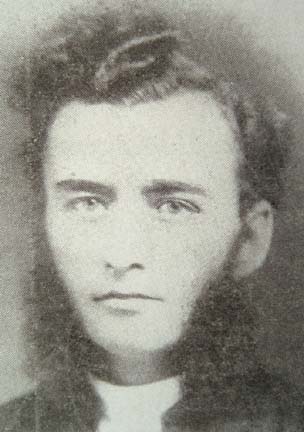
A. N. Sweders, second Immanuel pastor
Sweders was one of those who left Augustana when that body took this firm position. But when such lines are drawn it becomes hard to remember when the issue was still fluid. For example, when L.P. Esbjörn was receiving aid from the American Home Mission at Andover, Illinois, that group insisted on his following the Congregational policy of regenerate membership and admission to communion. Esbjörn, though a strict Lutheran, objected that it would be impossible and indeed cruel to deny an immigrant Swede a Christmas or Easter communion. In Sweden that right and responsibility hinged only upon baptism and membership in the parish church; nothing was said about conforming to some specified religious experience particular to revivalism, or signing a statement to that effect. But the influence of what Karl Olsson calls "Anglo-American revivalism" was to be pervasive. Very soon, this criterion of conversion was to become normative to the wing of immigrants fresh from the new Swedish Covenant and drawn to the style and work of Dwight L. Moody. It did not, we might observe, mend fences with the Congregationalists in the meantime. They were seen as somewhat worldly in spite of their policies (and not Swedish). But there were no doubt members of Immanuel who leaned in Sweders' direction.
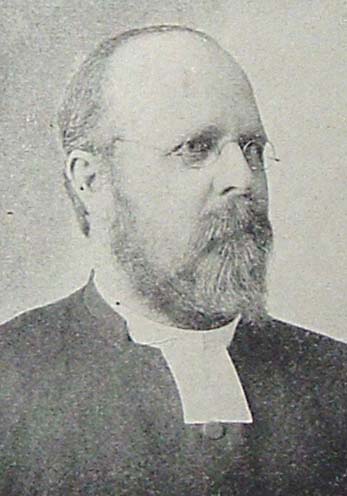
Fogelstrom: Pastor of Immanuel and hospital founder
The Augustana historian does not tell us why, but a subsequent pastor, an A.G. Freden, was refused ordination by the Synod to the displeasure of "some who were favoring him". Neither does he tell us whether there were defections to the new Mission Friend congregation then forming in Omaha though that seems inevitable. In any case, the ground was becoming more firm in the coming of E.A. Fogelstrom in 1878. He would build not only Immanuel and its new church next to the old Cass St. home, but make the Swedish Lutherans of Omaha into the proud inheritors of an institution which thrives to this day: the Immanuel medical complex.
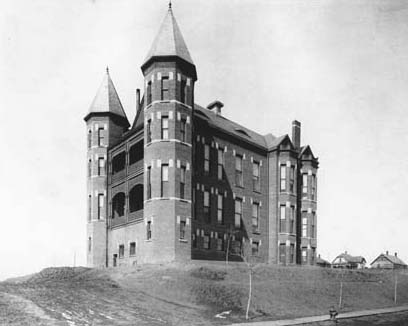
Fogelstrom's Immanuel Hospital:
contrasting with the north 72nd location today
And here is another site Eleanor found interesting: her dormitory at Immanuel medical center, on the old campus north of Ames and 34th St. where she attended nursing school in the 1960's.
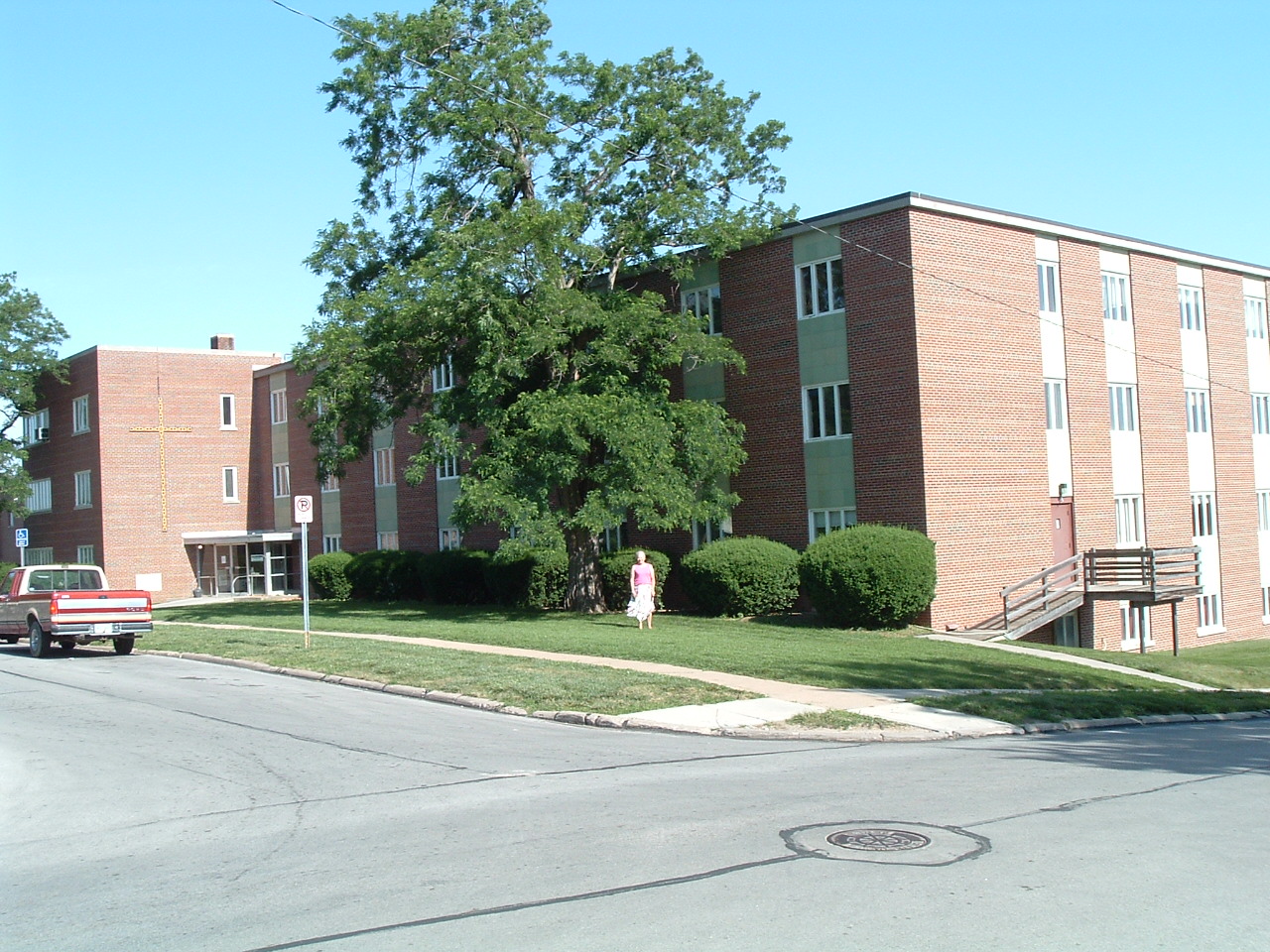
* * *
Here we insert a valuable tip to anyone pursuing Swedish church history in Omaha: your headquarters should be "Little Scandinavia" on Elkhorn's charming old main street.
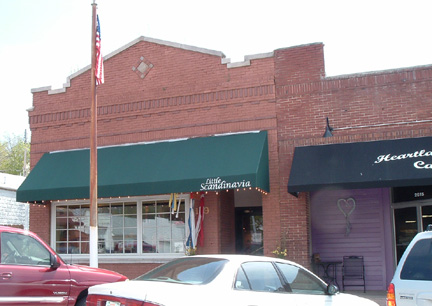
Our Swedish heritage headquarters
This gift shop is owned by Carl and Leona Anderson who have proven to be gracious hosts to all interested in things Swedish. Quite remarkably, Carl is the grandson and namesake of Rev. Carl Victor Anderson who was longtime pastor of the south Omaha Swedish Baptist church which we featured above.
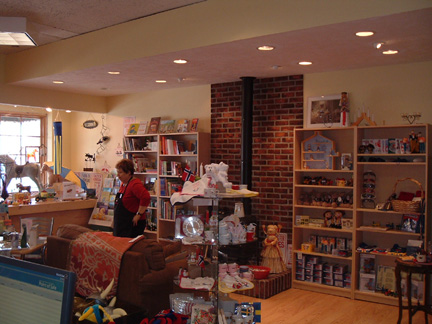
Leona Anderson: coffee is always on
With the help of the Andersons we have been able to trace the later progression of the south side Swedish Baptists to their later location adjacent to the "Center" shopping center:
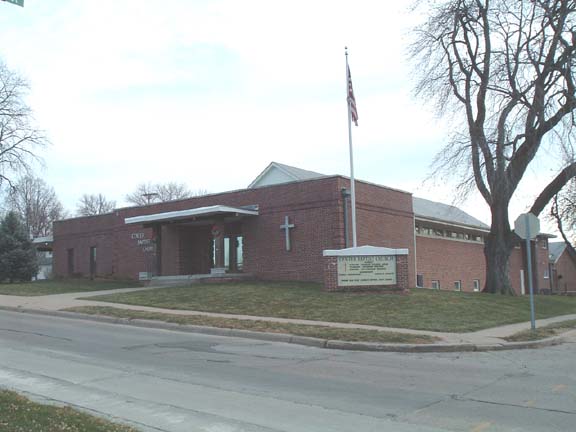
Central Baptist Church
And they also pointed out the migration of First Swedish Baptist church out to 92nd and Sprague where they became Bethel Baptist church. Later many migrated yet further west to the Harvey Oaks and Overland Hills churches.
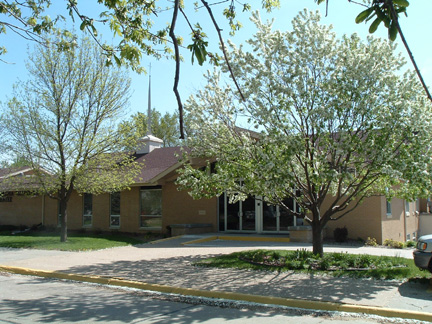
Bethel Baptist, now Omaha Christian Center
Don't miss Leona's "Little Scandinavia"!